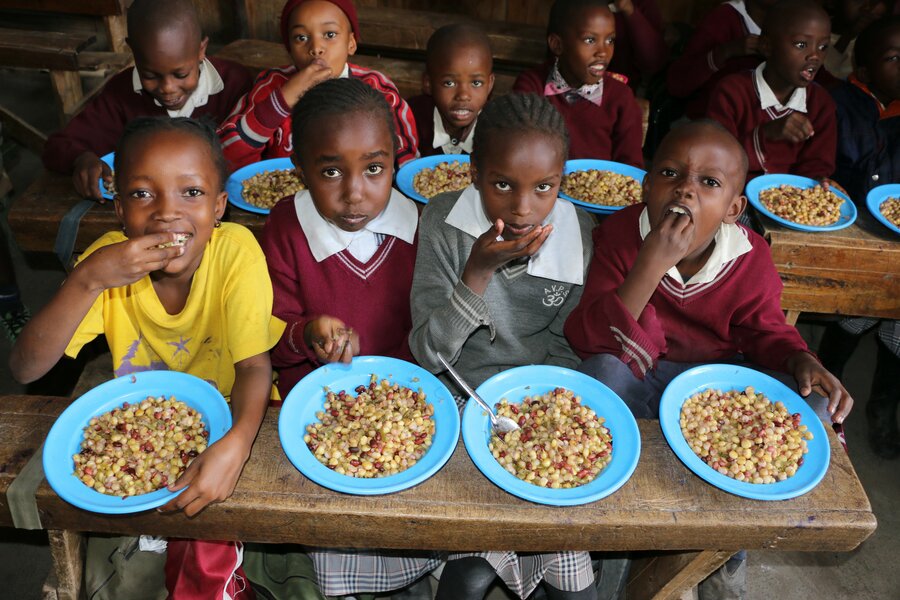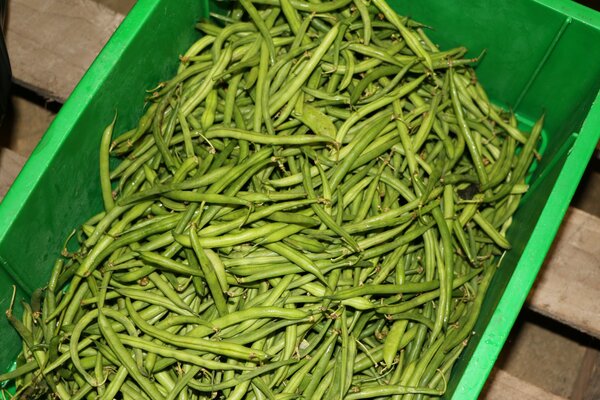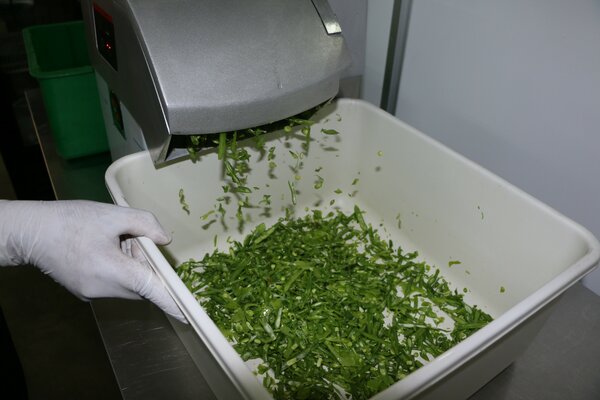Ugly vegetables destined for the dump are now helping to feed thousands of schoolchildren in Kenya
‘Without school lunches, these children would end up on the streets.'
Vegetables previously thrown away purely for their looks are being transformed into nutritious school meals in Kenya.
Over four months the World Food Programme (WFP) helped rescue more than 5 metric tons of green beans, snow peas, snap peas and broccoli — enough to feed 2,200 children for 75 school days.

Each day, 75 metric tons of produce grown on Kenyan farms for export is rejected after being deemed aesthetically imperfect. That's the equivalent of 600,000 tomatoes — ugly but edible — which mostly end up in landfills.
"These are vegetables that are either oddly shaped, longer or shorter than the desired size for packaging, or simply blemished, but perfectly nutritious and fit for consumption," said Dina Aburmishan, a WFP nutritionist in Kenya.


In January this year, WFP launched a pilot project to change the destination of these ugly vegetables from landfill to lunch, by diverting them into the country's school meals programme. With the support of WFP's Innovation Accelerator and the Australian Government, the initiative served the dual purpose of reducing food waste while providing more nutritious meals for disadvantaged children in three schools on the outskirts of Nairobi.

Rescue mission
During the four-month pilot, dubbed ‘Transformers', WFP's implementing partner, the Dutch company ENVIU, helped to connect the project with two companies which mainly supply the European market.
Instead of discarding the undesired produce, the companies delivered part of it to The Good Food Company, a Nairobi-based catering company contracted by WFP, where it was cooked up and delivered to the three schools.
"Whether in poverty or in plenty, children should go to school, said Evelyn Mudenyo, director of Little Bells primary school, an informal school 12 kilometres east of Nairobi which participated in the project. She is a firm believer in the power of school lunches to keep kids in school. "Without school lunches, these children would end up on the streets. The green vegetables are a welcome addition — the food is more nutritious."
The new menu was also appreciated by students. "My parents leave early in the morning and don't return till evening," said 10-year-old Caleb. "If I don't have lunch at school, I won't eat anything until evening. Vegetables are nutritious and healthy. Plain githeri, a mix of maize and beans, isn't as tasty."

Next steps
WFP will use the lessons from this pilot to explore new ways of working with fresh food exporters in order to give schools access to this inexpensive source of vegetables, while tackling the issue of food waste.
While WFP tested off-site catering in the first phase, the next step will explore on-site food preparation. This gives schools more ownership of the programmes — a prerequisite for the eventual handover.
"One thing we know for sure is that the students like the vegetables," said Dina. "Now we have to figure out how to harness this wonderful source of cheap, fresh food that is being wasted, in order to supply school meals in an affordable and sustainable way."


